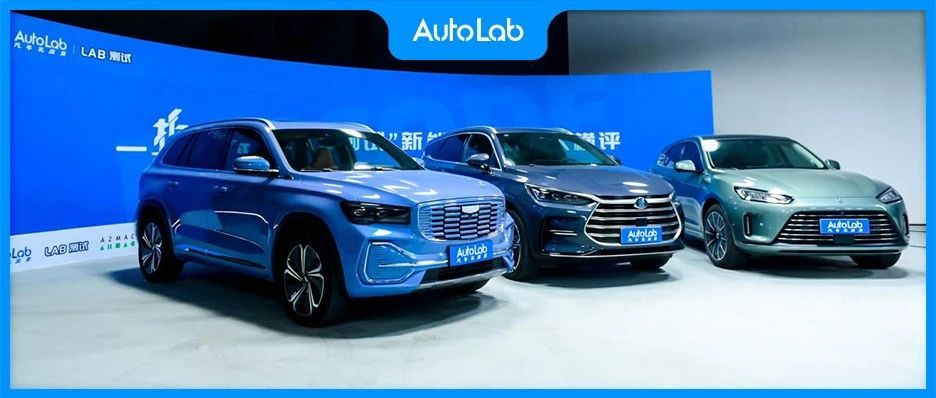AutoLab conducted a New Energy Vehicle (NEV) teardown review titled “Lab Testing” at the end of the year!
Three cars, the BYD Tang DM-i, the AITO WENJIE M5, and the Geely Star PI Hi・P, were selected as the targets of this teardown after being voted on in prior warm-up sessions.
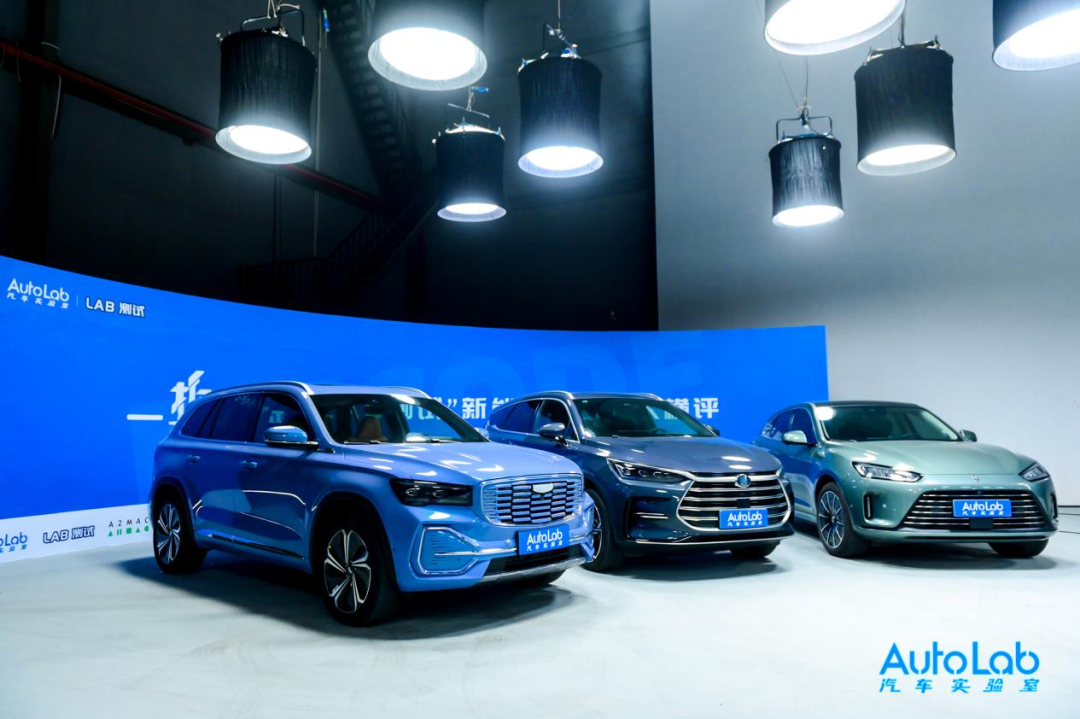
After a period of teardown and analysis, we held a technical sharing event on December 15th, “Uncovering the Depths | “Lab Testing” NEV Review.” To ensure the final teardown results were more in-depth and authoritative, we invited several KOL (Key Opinion Leaders) from the intelligent electric vehicle industry, including A2MAC1, pioneer of automotive technology benchmarking, and discussed and analyzed the entire teardown process and results together.
We also invited dozens of media colleagues from the automotive field to witness and analyze the final teardown results on December 15th.
Throughout the entire teardown summary process, we focused on the “vehicle safety, NVH, and three electric systems” as the key areas for interpretation and analysis. So, how did the three popular products perform? We will provide you with a comprehensive sharing in the following.
The Hottest Model Today – BYD Tang DM-i
-
Three Electric Systems: Rich Modes
-
Vehicle Safety: Mature Process
-
NVH: Full of Details
We took apart the BYD Tang DM-i, 2022 model 252KM Top Edition, with a price tag of 279,800 yuan.## Translation in English

The BYD Tang DM-i uses BYD’s self-developed blade battery and has a NEDC pure electric range of 252KM. The sales of the DM-i series have proven themselves in the market. The DM-i system is primarily powered by electricity, with the advantage of achieving multiple uses of electricity, less use of oil, and efficient use of oil.
Vehicle Safety:
All body covering parts of the BYD Tang DM-i are made of steel and are produced by stamping cold-rolled steel sheets. However, the conventional spot welding process is used in the welding process of the BYD Tang DM-i.

The design of the car body’s anti-collision beam is relatively conventional, with roll-formed iron used both front and rear. The length of the front anti-collision beam is the shortest among the three cars. However, a reinforced structure design that extends downward is also added under the two front longitudinal beams of the BYD Tang DM-i.
All in all, in terms of the safety of the BYD Tang DM-i body, the design and materials are standard. Its battery technology is a power-type battery, and the battery pack – cells – tray are integrated with the body to form a high-strength sandwich structure. However, a significant amount of thermally conductive, sealant and other colloids are filled inside, which makes it difficult to disassemble later.
NVH:
The BYD Tang DM-i uses a cast iron front suspension structure, and the semi-axle absorber is added to the long axis to suppress the vibration.

The volume of the tailpipe muffler is between that of the AITO WENJIE M5 and the Geely Star Way L Hi·P. The exhaust pipe is designed in two sections, which are linked with clamps.
 The hub liner adopts injection molding process, but the interior is covered with sound insulation cotton, which can also reduce the noise caused by sand and stone impacts. The front and rear bumpers are also filled with a large amount of sound insulation cotton, optimizing the entire vehicle’s sound insulation and resonance, including the design of the entire car’s carpet sound insulation.
The hub liner adopts injection molding process, but the interior is covered with sound insulation cotton, which can also reduce the noise caused by sand and stone impacts. The front and rear bumpers are also filled with a large amount of sound insulation cotton, optimizing the entire vehicle’s sound insulation and resonance, including the design of the entire car’s carpet sound insulation.
In terms of NVH, BYD’s performance is satisfying, with almost no blind spots in the overall NVH optimization. Everything that needs to be done has been taken care of, and the design details are full of considerations.
Powertrain:
BYD’s 1.5T engine and EHS dual-motor transmission system based on flat-wire winding technology. The P1 and P2 motors are all self-developed, and the single-stage reducer is transformed from a traditional gearbox, leaving space for upgrading redundancy. It has both in-series and parallel mode, but the parallel output condition is narrower than that of Geely’s 3-speed DHT Pro, and the integration of hybrid system is relatively low.

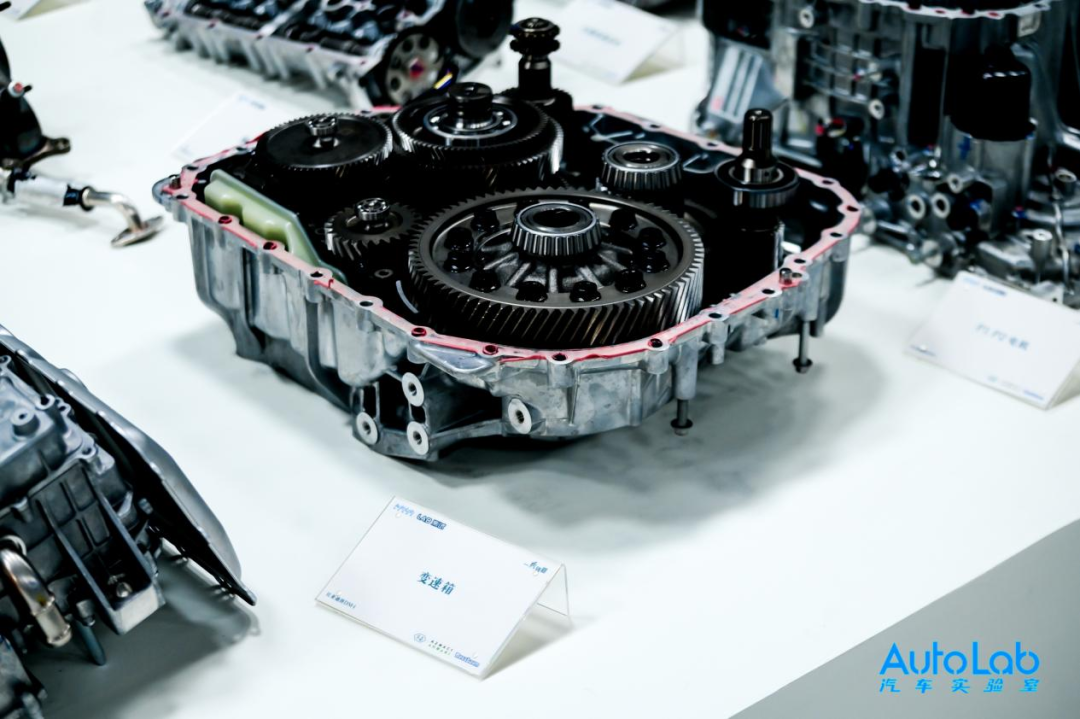

However, the thermal management system is highly integrated and uniformly managed by a heat pump. In terms of electrification, BYD’s characteristics lie in its highly mature and reliable structure, with the highest self-developed component rate, which has significant advantages in reducing the overall vehicle cost. However, the technical value of the electrification system is relatively ordinary.
The Emerging Hybrid Powerhouse – Geely Xingyue L Hi・P
- Powertrain: Pursuing High Efficiency
- Vehicle Safety: Structured
- NVH: Source Control
We disassembled the Geely Xingyue L Hi・P, which is the 2023 model year 1.5T DHT extended-range electric flagship version, priced at 253,700 RMB.
 # Geely Star Way L Hi·P Markdown Text
# Geely Star Way L Hi·P Markdown Text
The Geely Star Way L Hi·P has just been released, and although it is new to the market, it has gained quite some fame. With the help of the 3-speed variable-frequency electric drive system DHT Pro and its technical value, it has a slight advantage over DM-i. It is undoubtedly a rising star in the new energy vehicle market.
It is equipped with a 41.2 kWh CTP flat battery, and its pure electric range exceeds 200 kilometers. With the unique 3-speed variable-frequency electric drive system DHT Pro and equipped with “dual-motor series lock,” it can achieve extended range electric driving. Compared with AITO WENJIE M5 and BYD Tang DM-i, the Geely Star Way L Hi·P has a more comprehensive experience, including pure EV mode, hybrid mode, and extended-range electric mode.
Vehicle Safety:
The body of the Geely Star Way L Hi·P is made of steel materials, and cold-rolled steel plates are used to press form. Similar to AITO WENJIE M5, the Geely Star Way L Hi·P has also added the Apras welding process. The advantage of the Apras welding process is that the weld point is flat, which is common in luxury cars. In addition, this welding process has higher strength when the vehicle collides, making it less likely to tear and is a plus.
The front crash beam of the Geely Star Way L Hi·P is made of aluminum alloy material, with a length of 1276mm, which is the longest and has the highest coverage rate among the three vehicles.

Because the Geely Star Way L Hi·P is the only vehicle among the three with an active grille design, its front crash beam’s crumple zone is longer than the other two vehicles. Regarding the rear crash beam, it is also made of rolled iron, but there is an additional energy absorption box compared to BYD Tang DM-i.
In addition, during dismantling, it was found that the Geely Star Way L Hi·P has an obvious collision active dropout design similar to Volvo. The front and rear installation points can move the power assembly down together after being cut. This design can effectively reduce the intrusion of the power assembly into the passenger compartment, and reduce the load on the transfer path under frontal collision, thus reducing the collision waveform and vehicle intrusion.
Regarding the safety design of the doors, Geely Star Way L Hi·P and AITO WENJIE M5 are consistent, with two protection beams, and a W-shaped section, which is superior to BYD Tang DM-i.
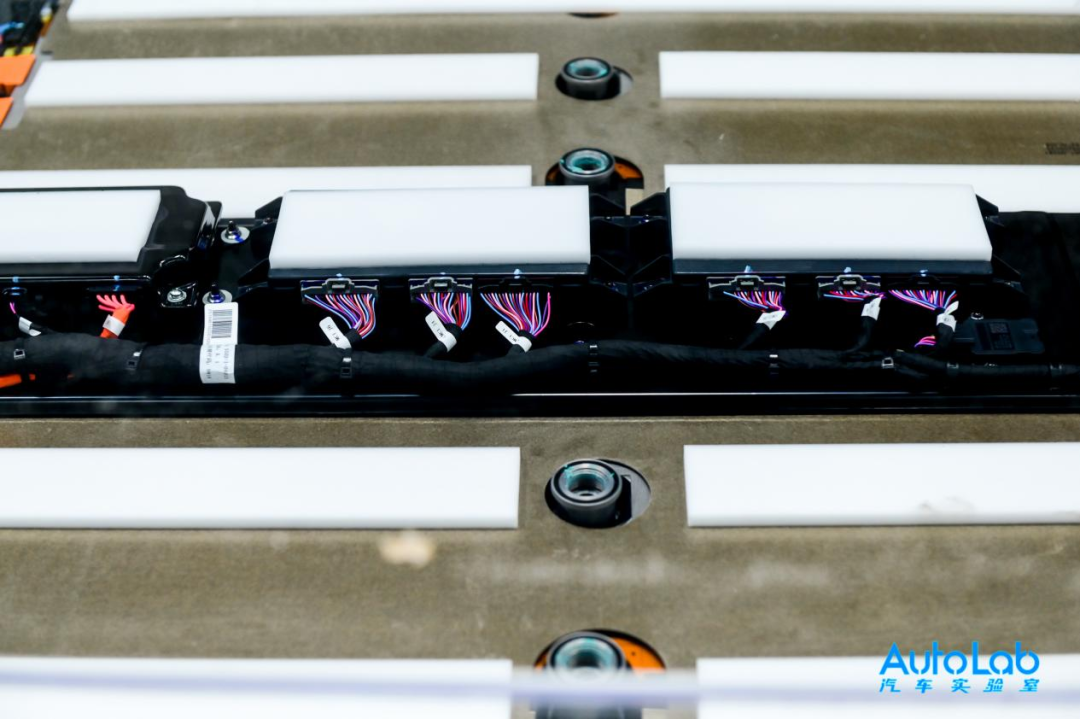 ## Battery pack safety design
## Battery pack safety design
In terms of battery pack protection, the Geely Xingyue L Hi・P can be regarded as having the most stringent design among the three cars. For instance, both the AITO AITO M5 and Geely Xingyue L Hi・P battery packs use internal reinforcement, but the AITO AITO M5 battery pack only has side mounting points.
The Geely Xingyue L Hi・P battery pack has a total of 17 mounting points on the front and sides, including four bolts in the center of the battery pack for fixation. When the sides are hit, three cross beams help to better transmit the force to other areas of the vehicle. Additionally, the stability of the battery pack on the bottom of the vehicle is relatively better.
Furthermore, Geely Xingyue L Hi・P added a 40mm collision-prevention crossbeam underneath the vehicle’s subframe to protect the battery pack. The internal cruciform frame support of the battery pack also better protects the battery core, high-voltage controller, BMS, and other components.
Overall, Geely Xingyue L Hi・P’s consideration of the vehicle’s safety is very thoughtful and comprehensive, starting from the initial stage of vehicle development. For instance, the design avoids potential risks such as the main subframe detaching, the three-in-one highly integrated power management module located in the middle and rear of the vehicle to avoid rear-end collisions, and the low-voltage battery being placed in the back to avoid power outage risks caused by most front-end collisions.
It is clear that Geely Xingyue L Hi・P tends to focus more on designing the safety performance of the entire vehicle from the beginning of the car model development process. The mastery of the overall safety design is more mature, which indeed carries on Volvo’s safety genes.
NVH:
The Geely Xingyue L Hi・P uses the same front suspension structure as the BYD Tang DM-i, but has added shock absorbers on both sides of the half-shaft.
The volume of the tailpipe muffler is 4+32 liters, which is the largest among the three cars, and can minimize engine noise from the source. Moreover, the design of the entire exhaust pipe connection system as a single welded entity can reduce resonance noise.
Some details on the Geely Star Voyager L Hi・P model include optimized chassis and aerodynamic design, rubber-insulated fuel lines, and a unique three-seal noise-reducing design for the only vehicle door. However, the rear trunk lacks carpet soundproofing.
Overall, Geely Star Voyager L Hi・P has a solid NVH control, with a design philosophy focused on controlling noise at the source rather than relying heavily on sound insulation. For example, integrating the compressor onto the engine in the front cabin results in better vibration control than the AITO M5’s compressor arrangement on the body longitudinal beam.
In terms of electric powertrain systems, Geely has a high level of integration and technical content. P1 and P2 motors, dual-clutch systems (one for 3rd gear shifts, one for power output), hydraulic control models, electric series pumps, planetary gear units, and other major modules are all integrated, resulting in a minimal volume, and the cost of components such as the P1 motor is the highest among the three vehicles.
In terms of weight, the Geely 3-speed DHT Pro (including oil and fluid) weighs 120kg, compared to BYD’s single-speed reducer (including oil and fluid) at 143.5kg, indicating excellent lightweight core structure design.
Moreover, compared with single-speed transmissions, its core system highlights a clear advantage in both efficiency and performance, particularly for high and low-speed driving conditions. For instance, the parallel direct drive function begins at a speed of over 20km/h, providing a true pure-electric driving experience.
Additionally, the three-in-one high-integration power management module has the highest level of integration across the entire vehicle, with only one main control box for the vehicle. The module is located in the middle to rear of the vehicle, relatively favorable for rear-end collision protection, while the BYD Tang DM-i and AITO M5 are located in the rear of the vehicle.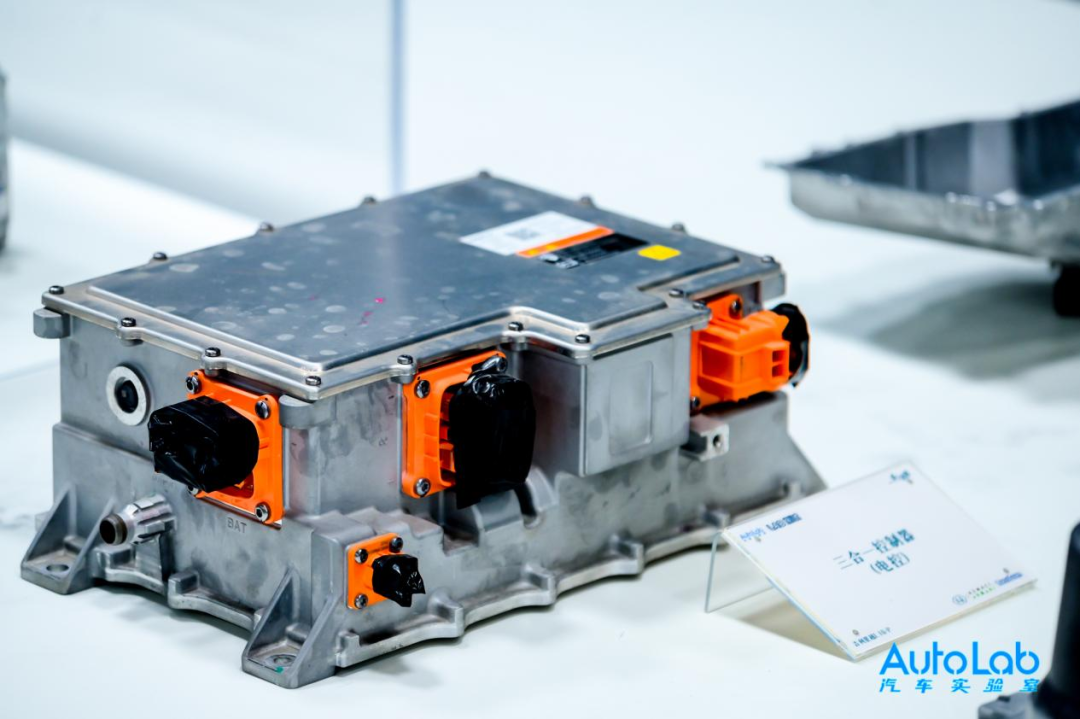
On the battery side, the battery capacities of BYD Tang DM-i, Geely Star Yue L Hi・P, and AITO AITO M5 are 45.8, 41.2, and 40 kWh, respectively. However, the energy density of the Geely Star Yue L Hi・P battery is 167 Wh/kg, which is also the highest among the three energy-type batteries.
Overall, in terms of the technological value, technological content, and leadership of the three electrics, Geely Star Yue L Hi・P’s system is significantly higher than other hybrid systems. The pursuit of high efficiency and performance in the whole hybrid system is more thorough.
For example, when starting, matching 1 gear with a large speed ratio can make the start faster, changing from 3rd to 2nd gear in the middle section of high speed can enhance the acceleration ability, and 3rd gear can also solve some pain points such as limited high-speed driving of the motor and poor driving quality under power loss. It is also a hybrid product that truly has a range-extending mode driving and pure electric experience except for AITO AITO M5.
Latecomer —AITO AITO M5
-
Three electrics: Pure electric first
-
Overall safety: Strict use of materials
-
NVH: Lightness is king
We dismantled the AITO AITO M5 as the 2022 RWD standard version, priced at 259,800 yuan.

AITO AITO M5 only has a range-extending mode, which once caused controversy, but the market reaction was unexpected. Its 1.5T range extender has a maximum thermal efficiency of 41%, coupled with a 40 kWh Ningde era CTP non-module battery, and the highest comprehensive range can reach over 1000 kilometers, which is also a popular choice now.
Overall safety:
The body cover parts of AITO AITO M5 are also made of steel material, stamped from cold-rolled steel sheets. However, in terms of welding process, AITO AITO M5 and Geely Star Yue L Hi・P have added Apras welding process, which is a plus.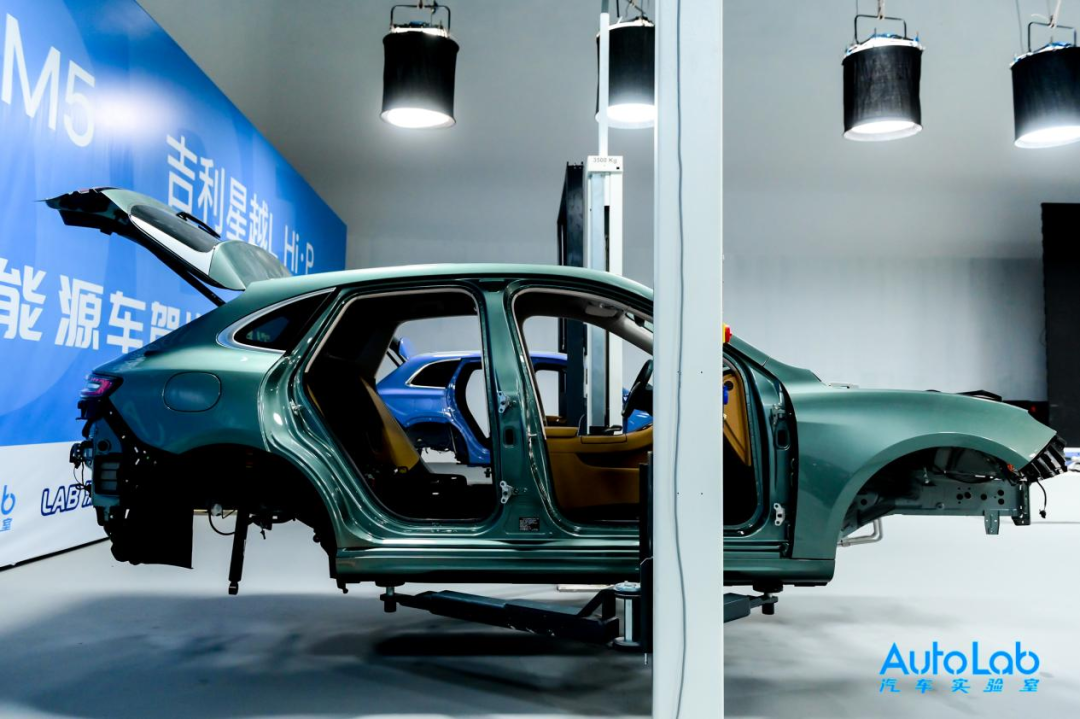
AITO WENJIE M5 front bumper beam is a roll-pressed iron material with a longer crumple zone than that of BYD. The overall design structure is conventional. However, its rear bumper beam is made of aluminum alloy, which could be a layout for the rear-wheel-drive motor. It is hoped to protect the rear axle motor with high-strength material.
In terms of door safety design, AITO WENJIE M5 and Geely Xingyue L Hi·P have the same two W-shaped cross-section protective beams, while Tang DM-i adopts a traditional work-shaped reinforcement structure with slightly weaker strength.
NVH:
AITO WENJIE M5 is the only design among the three cars without a half-shaft vibration reducer, but its full aluminum alloy front suspension load is also smaller.

AITO WENJIE M5 has full-carpet sound insulation, but there is no noise insulation package on the back side of the front door, and it is worth mentioning that the engine hood is designed with double-layer sound insulation and heat insulation. In contrast, the other two cars only have sound insulation.
Overall, AITO WENJIE M5 has different emphasis in NVH design, such as considering the lightweight characteristics of the front and rear aluminum alloy suspensions of the entire vehicle, and a reduction in design compared to BYD Tang DM-i and Geely Xingyue L Hi·P, in terms of half-shaft shock absorption structure.
Powertrain:
AITO WENJIE M5 has the simplest overall structure among the three vehicles. There is only a range extender+generator in the front compartment. Since it is the only rear-wheel-drive model, the driving motor is located on the rear axle. In addition, the 1.5T range extender is the only cast iron material among the three cars, which is relatively backward and has a noticeable contrast with the full aluminum front and rear suspensions.

 Compared with the flat-line motors of BYD Tang DM-i and Geely StarWay L Hi・P, the generator design of AITO WENJIE M5 is obviously lagging behind in terms of coil and structure.
Compared with the flat-line motors of BYD Tang DM-i and Geely StarWay L Hi・P, the generator design of AITO WENJIE M5 is obviously lagging behind in terms of coil and structure.
The rear axle driving motor is designed by Huawei, which has a large power output. However, its driving motor volume is also large, and the integration degree is relatively low. Of course, it is not ruled out that a motor with larger power output may be reserved in the structure. After all, AITO WENJIE M5 only has a series-parallel hybrid mode, and the driving motor is the only source of power.
Overall, the technical content of AITO WENJIE M5 is indeed not high, and the structural layout is the simplest. The whole vehicle design, such as some abrupt structural components in the front engine compartment, clearly lacks overall consideration at the beginning of product development, so there are many small repairs later, and the manufacturing technology still needs further accumulation.
Seeing is believing, but disassembling is even better. After disassembling the three cars, we finally have a deep impression of their real product quality.
Regarding “An in-depth review of Lab Test New Energy Vehicles during the New Year”, we have more information to release about the three cars. Please follow AutoLab and stay tuned!
This article is a translation by ChatGPT of a Chinese report from 42HOW. If you have any questions about it, please email bd@42how.com.
